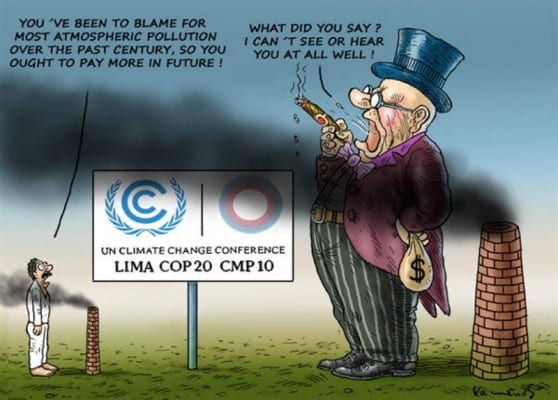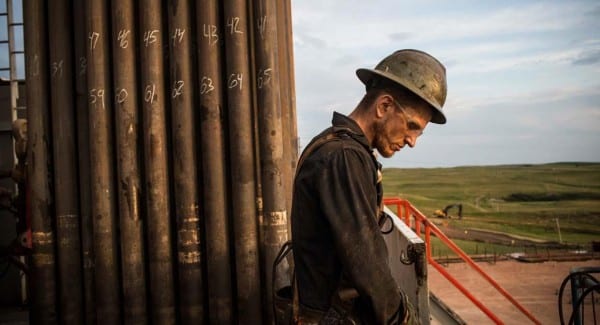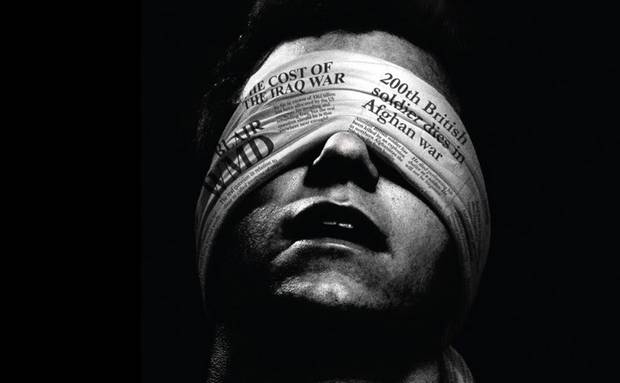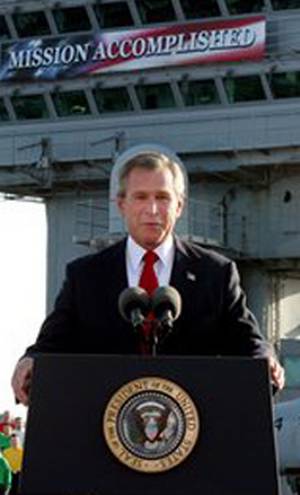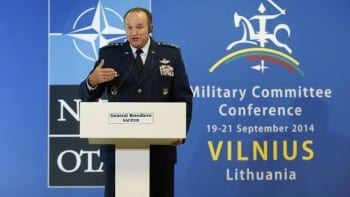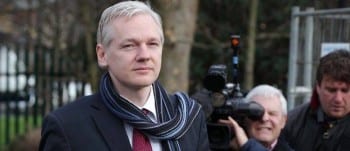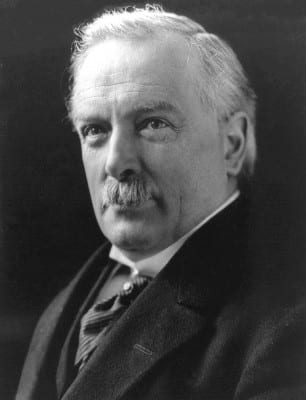[dropcap]As counterinsurgency[/dropcap] expert David Galula notes above, a census is an effective way of controlling large numbers of persons. Thus, while CIA paramilitary officers used their covert Census Grievance Program to gather intelligence in Viet Cong controlled villages, CIA police advisers were conducting a census program of their own. Its origins are traced to Robert Thompson, a British counterinsurgency expert the State Department hired in 1961 to advise the US on police operations in South Vietnam. Based on a system he had used in Malaya, Thompson proposed a three-pronged approach that coordinated military, civilian intelligence, and police agencies in a concerted attack on the Viet Cong Infrastructure.
On Thompson’s advice, the National Police in 1962 initiated the Family Census program, in which a name list was made and a group photo taken of every family in South Vietnam. The portrait was filed in a police dossier along with each person’s political affiliations, fingerprints, income, savings, and other relevant information, such as who owned property or had relatives outside the village, and thus had a legitimate reason to travel. This program was instrumental in identifying persons who could be blackmailed into working in their villages as informers. By 1965 there were 7,453 registered families.
Through the Family Census, the CIA learned the names of Communist cell members in government-controlled villages. Apprehending the cadre that ran the cells was then a matter of arresting all minor suspects and “softening them up” until they informed. The idea was to weaken the insurgency by forcing its political cadres to flee to guerrilla units in the jungle, thus depriving the VCI of its leadership in GVN areas. This was no small success, for, as Nguyen Van Thieu once observed, “Ho Chi Minh values his two cadres in every hamlet more highly than ten military divisions.”’
Thompson’s method was successful, up to a point, because many VCI were not terrorists but, as Galula writes, “men whose motivations, even if the counterinsurgent disapproves of them, may be perfectly honorable. They do not participate directly, as a rule, in direct terrorism or guerrilla action and, technically, have no blood on their hands.”’

John Brennan at CIA HQ defending torture.
Thompson’s dragnet technique engendered other problems. Mistakes were made, and innocent people were routinely tortured or subject to extortion by crooked cops. On other occasions VCI double agents prompted CIA “contractors” to arrest people hostile to the insurgency. Recognizing these facts, Thompson suggested that the CIA organize a police special branch of professional interrogators who would not be confused with mercenary contractors. This, in 1964, at Thompson’s suggestion, the Police Special Branch was formed plans were made to center it in Province Intelligence Coordinating Committees (PICCs) in South Vietnam’s 44 provinces. As one of their main features, the CIA-controlled PICCs were designed to coordinate paramilitary kidnapping and assassination operations with the intelligence operations of the Special Branch.
Also in 1964, as part of the effort to combine police, intelligence and paramilitary programs, the CIA formed paramilitary reaction forces in seven key districts surrounding Saigon. The CIA provided supplies and training, while military intelligence and Special Forces provided personnel. Lists of defectors, criminals, and other potential recruits, as well as targets, came from Special Branch files.
The CIA’s “motivational indoctrination training program” was designed by its creator, Frank Scotton, to “develop improved combat skills-increased commitment to close combat-for South Vietnamese. This is not psywar against civilians or VC. This is taking the most highly motivated people, saying they deserted, typing up a contract, and using them in these units. Our problem,” Scotton said, “was finding smart Vietnamese and Cambodians who were willing to die.”’
Minds capable of such murderous scenes were not averse to exploiting American soldiers who had committed war crimes. Rather than serve time in military stockades in Vietnam or elsewhere, Americans with deviant personalities were likely to volunteer for dangerous and reprehensible jobs for the CIA’s Special Operations Group.
About the assassination squads he and the CIA developed, Scotton said, “For us, these programs were all part of the same thing. We did not think of things in terms of little packages.” That “thing,” of course, was a grand scheme to win the war, at the bottom of which-were the province interrogation centers.
[dropcap]John Patrick Muldoon[/dropcap]— “Picadoon” to those who knew him, was the first director of the CIA’s Province Interrogation Center (PIC) program in South Vietnam. Legendary CIA officer Lucien Conein told me I could find him at a particular bar in Washington, D.C. “Tell him I said he was the worst private investigator ever,” Conein said. “Tell him I said he’d lose a guy halfway across the street.”
I took cab over to Tenley Square and walked into the bar. It was midnight. The bartender was cleaning glasses. “Is John Muldoon here?” I asked. The bartender looked at me suspiciously and nodded at a really big guy hunched over a drink at the far end of the bar.
I walked down. “Are you Muldoon?” He turned and gave me a menacing look. I took that for a yes. “Conein says you’re the worst PI in the world. Says you’d lose a guy,” etcetera.
Muldoon was offended. “You can tell that fucker Conein I wouldn’t lose the guy till he was all the way across the street,” he said indignantly.
Based on that introduction, Muldoon and I began a series of interviews over the next few days, one of which was conducted at his brother’s sprawling horse and polo farm in Maryland.

Standing six feet four inches tall, weighing well over two hundred pounds, Muldoon had a scarlet face and deep voice. A Georgetown University dropout, he joined the Agency in 1958. At least one of his family members was already working there. He did his first tour in Germany and in 1962 was sent to South Korea. “I worked interrogation in Seoul,” Muldoon recalled. “I’d never been involved in interrogation before. Ray Valentine was my boss. There was a joint KCIA-CIA interrogation center in Yon Don Tho, outside Seoul.”
In recruiting cadres for the Korean CIA, the CIA used the same method it used to staff the South Vietnamese Central Intelligence Organization (CIO), which the CIA under Station Chief William Colby created in 1961.
As revealed by John Marks in The Search for the Manchurian Candidate, the CIA sent its top psychologist, John Winne, to Seoul to “select the initial cadre,” for the KCIA using a CIA-developed psychological assessment test. “I set up an office with two translators,” Winne told Marks, “and used a Korean version of the Wechsler.” CIA psychologists “gave the tests to 25 to 30 police and military officers,” Marks writes, “and wrote up a half-page report on each, listing their strengths and weaknesses. Winne wanted to know about each candidate’s ability to follow orders, creativity, lack of personality disorders, motivation-why he wanted out of his current job. It was mostly for the money, especially with the civilians.”’
In this way secret police are recruited as CIA assets in every country where the Agency operates. In Latin America, Marks writes, “The CIA … found the assessment process most useful for showing how to train the anti-terrorist section. According to results, these men were shown to have very dependent psychologies and needed strong direction.” Direction that comes from the CIA. Marks quotes one assessor as saying, “Anytime the Company spent money for training a foreigner, the object was that he would ultimately serve our purposes.” CIA officers “were not content simply to work closely with these foreign intelligence agencies; they insisted on penetrating them, and the Personality Assessment System provided a useful aid.”’

Water-boarding was widely practiced in Nam.
Muldoon was assigned to South Vietnam in November 1964. “I was brought down to the National Interrogation Center [NIC] and told, `This is where you’re going to work. You’re going to advise X number of interrogators. They’ll bring you their initial debriefing of the guy they’re working on, then you’ll give them additional CIA requirements.”’
The CIA had different requirements because “the South Vietnamese wanted information they could turn around and use in their battle against the Vietcong in the South. But we were interested in information about things in the North that the South Vietnamese couldn’t care less about. And that’s where the American advisers would come in-to tell them, `You gotta ask this, too.’
“We had standard requirements depending on where a guy was from. A lot of VC had been trained in North Vietnam and had come back down as volunteers. They weren’t regular North Vietnamese Army. So if a guy came from the North, we wanted to know where he was from, what unit he was with, how they were organized, where they were trained…. If a guy had been up North for any length of time, we wanted to know if he’d traveled on a train. What kind of identification papers did he need? Anything about foreign weapons or foreigners advising them. That sort of thing.”
Built in 1964, the National Interrogation Center served as CIO headquarters. It was where the CIA coordinated civilian, police, and military intelligence. “It was located down on the Saigon River,” Muldoon recalled, “as part of a great big naval compound. On the left was a wing of offices where the American military chief, an Air Force major, was located. In that same wing were the chief of the CIO, his deputy, and the CIA advisers.” Muldoon notes that the same CIA interrogators were there until his departure for Thailand in August 1966. There were four interrogators when he arrived and he was the fifth. Three were Air Force enlisted men serving under an Army captain. Muldoon’s boss, the CIA chief of the National Interrogation Center was Ian “Sammy” Sammers, who worked under the station’s senior liaison officer, Samuel B. Harman Hopler, who had supervised construction of the NIC in early 1964.
And we may ask, all of this for what? So that a puny, exorbitantly privileged percentage of humanity can lord over billions of human beings and most of the planet, living like kings, while the rest of humanity remains immersed in a swamp of poverty, ignorance and unnecessary suffering?
According to Muldoon, “There was a conference in Nha Trang in April 1965. They were putting together an interrogation center in an existing building they had taken over, and they asked for help from the NIC. So I was sent up there with the Army captain to look at the place, figure out what kind of staff we needed, and how we were going to train them. And while we were up there trying to break these guys in, the CIA liaison officer in Nha Trang, Anthony Bartolomucci, asked Sammy if they could keep me there for this conference, at which all of our people were going to meet Jack `Red’ Stent, who was taking over from Paul Hodges as chief of foreign intelligence. Bartolomucci wanted to show off his new interrogation center to all these big shots.
“The military people from the NIC had done their job,” Muldoon continued, “so they left. But I stayed around. Then (CIA officer) Tucker Gouglemann http://en.wikipedia.org/wiki/Tucker_Gougelmann and Stent showed up for this conference. Tucker was chief of Special Branch field operations. Things were just starting to get off the ground with the PICs. A couple of them were already under way one in two provinces and Tucker told me, `We’re going to build, build, build, and I need someone to oversee the whole operation. I want you to do it.’
“So we had this big conference, and they packed the interrogation center full of prisoners. Bartolomucci wanted to show off with a bunch of prisoners, so he got his police buddies to bring in a bunch of prostitutes and what have you and put them in the cells. I don’t think they had one VC in the place. After the conference they all went back to the regular jail, and I went to work for Tucker.”
“It’s funny,” Muldoon reminisces,” but me and Tucker used to talk about the PICs. He said something like `John, if we lose this war one day, we could end up in these god-dammed things if we get caught.’
“’Well,’ I asked, `what would you do if you were in there?’
“He said he thought he’d kill himself rather than go through interrogation.” Then Muldoon laughed. “Tucker wanted to turn the PICs into whorehouses. The interrogation rooms had two-way mirrors.
“Tucker was a hero in the Marine Corps in World War Two,” Muldoon added. “He joined the Agency right after and worked in Korea, running operations behind the lines. He was in Afghanistan and worked in training, too. He got to Vietnam in 1962 and was base chief in Da Nang running everything that had to do with intelligence and paramilitary operations. When I arrived he was in Saigon trying to set up the Province Intelligence Coordination Committees with Jack Barlow, a British guy from MI Six. Barlow had been in Malaya with Robert Thompson, and they were the experts.
PICCs
Forerunner to the Province Interrogation Center program, the Province Intelligence Coordination Committee program was designed to extend CIO operations into the provinces. Each PICC was to serve as the senior intelligence agency within each province and to guide, supervise, and coordinate all military, police, and civilian operations. But the US military refused to go along, so the CIA settled on its unilateral Province Interrogation Center program. And that’s how and when the PICs became the place where the CIA coordinated its paramilitary and intelligence operations at the province level.
The Special Branch and CIA officers (often contractors) stationed at the PIC would get informants to tell them who and where the VC cadre and secret agents were, and then the CIA would send the Provincial Reconnaissance Unit (PRU) team to kidnap or kill them. This was the one-two punch of the counter-insurgency; the secret PICs and the PRU, which, prior to 1964, were known as counter-terror teams.” Through the PICs, the CIA learned the identity and structure of the VCI in each province; through the PRU, the CIA wiped them out, along with their families and friends.
The problem with Bartolomucci’s initial PIC was its design, so CIA architects re-designed it. The end product was strictly functional, minimizing cost while maximizing security. Through Pacific Architects and Engineers (PA&E), the CIA’s logistics staff hired local Vietnamese contractors to build interrogation centers in each of South Vietnam’s 44 provinces. Funds and staff salaries came from the Special Branch budget, which itself was totally funded by the CIA. After a PIC was built, the CIA bought it and donated it to the South Vietnamese National Police, at which point it became a National Police facility under the direction of the Special Branch. Each provincial capital had a secret CIA interrogation center, as did the four region capitals. The difference was that regional interrogation centers were larger, holding two to three hundred prisoners each.
According to Muldoon, it was up to the CIA’s liaison officer to convince the province chief and his CIO counterpart to find a spot for the PIC near the provincial capital. Once the interrogation center was built, the liaison officer became its adviser, and Muldoon helped him recruit its staff. Most PICs were built or under construction by August 1966, when Muldoon was transferred to Thailand to build the CIA’s huge interrogation center in Udorn.
Inside a PIC
One story high, fashioned from concrete blocks, poured cement, and wood in the shape of a hollow square, a PIC was four buildings with tin roofs linked around a courtyard. In the center of the yard was a combination lookout-water tower with an electric generator under it. “You couldn’t get the guards to stay out there at night if they didn’t have lights,” Muldoon explained. “So we had spotlights on the corners, along the walls, and on the tower shooting out all around. We also bulldozed around it so there were no trees or bushes. Anybody coming at it could be seen crossing the open area.”
People entered and exited the PIC through green, steel-plated gates, “Which were wide open every time I visited,” said Muldoon, who visited the PICs only during the day. “You didn’t want to visit at night,” when attacks occurred. PICs were located on the outskirts of town, away from residential areas, so as not to endanger the people living nearby, as well as to discourage rubbernecking. “These were self-contained places,” Muldoon emphasized.
Telephone lines running in and out of the PICs were tapped by the CIA.
On the left side were interrogation rooms and the cellblock; depending on the size, 20 to 60 solitary confinement cells the size of closets. Men and women were not segregated. “You could walk right down the corridor,” according to Muldoon. “It was an empty hallway with cells on both sides. Each cell had a steel door and a panel at the bottom where you could slip the food in and a slot at the top where you could look in and see what the guy was doing.” There were no toilets, just holes to squat over. “They didn’t have them in their homes.” Muldoon laughed. “Why should we put them in their cells?”
Prisoners slept on concrete slabs. “Depending on how cooperative they were, you’d give them a straw mat or a blanket. It could get very cold at night in the highlands.” A system of rewards and punishments was part of the treatment. “There were little things you could give them and take away from them, not a lot, but every little bit they got they were grateful for.”
Depending on the amount of VCI activity in the province and the personality of the PIC chief (a Special Branch officer), some interrogation centers were always full while others were always empty. In either case, “We didn’t want them sitting there talking to each other,” Muldoon said, so “we would build up the cells gradually, until we had to put them next to each other. They were completely isolated. They didn’t get time to go out and walk around the yard. They sat in their cells when they weren’t being interrogated. After that they were sent to the local jail or were turned back over to the military, where they were put in POW camps or taken out and shot. That part I never got involved in,” he said, adding that they “were treated better in the PICs than in the local jails for common criminals. Public Safety was advising them, working with the National Police. Sometimes they had sixty to seventy people in a cell that shouldn’t have had more than ten. But they didn’t care. If you’re a criminal, you suffer. If you don’t like it, too bad. Don’t be a criminal.”
The CIA interrogation process worked like this. “As we brought prisoners in, the first thing we did was run them through the shower. That’s on the left as you come in. After that they were checked by the doctor or nurse. That was an absolute necessity because God knows what diseases they might be carrying with them. They might need medication. They wouldn’t do you much good if they died the first day they were there and you never got a chance to interrogate them. That’s why the medical office was right inside the main gate. In most PICs,” Muldoon noted, “the medical staff was usually a local South Vietnamese Army medic who would come out and check the prisoners coming in that day.”
After the prisoner was cleaned, examined, repaired, weighed, photographed, and fingerprinted, his biography was taken by a Special Branch officer in the debriefing room. This initial interrogation extracted “hot” information that could be immediately exploited (the whereabouts of an ongoing Communist Party committee meeting, for example), as well as the basic information needed to come up with requirements for the series of interrogations that followed. Then the prisoner was given a uniform and stuck in a cell.
The interrogation rooms were at the back of the PIC. Some had two-way mirrors and polygraph machines, although sophisticated equipment was usually reserved for regional interrogation centers, where expert CIA staff interrogators could put them to better use. Most province liaison officers were not trained interrogators. “They didn’t have to be,” according to Muldoon. “They were there to collect intelligence, and they had a list of what they needed in their own province. All they had to do was to make sure that whoever was running the PIC followed their orders. All they had to say was: `This is the requirement I want.’ Then they read the initial reports and went back and gave the Special Branch interrogators additional requirements, just like we did at the NIC.”
The guards lived in the PIC. As they returned from duty, they stacked their weapons in the first room on the right. The next room was the PIC chief’s office, with a safe for classified documents, handguns, and his bottle of scotch. The PIC chief’s primary job was to “turn” captured VCI into double agents, and maintain informant networks in the hamlets and villages. Farther down the corridor were offices for interrogators, collation and report writers, translator-interpreters, and clerical and kitchen staff. There were file rooms with locked cabinets and map rooms for tracking the whereabouts of VCI in the province. And there was a room where defectors were encouraged to become counter-terrorists.
Once an interrogation center had been constructed and a staff assigned, Muldoon summoned the training team from the NIC. Each member of the team was a specialist. The Army captain trained the guards. Air Force Sergeant Frank Rygalski taught report writers how to write proper reports. There were standard reporting formats for tactical as opposed to strategic intelligence and for agent reports. To compile a finished report, an interrogator’s notes were reviewed by the chief interrogator, then collated, typed, copied and sent to the Special Branch, CIO, and CIA. Translations were never considered totally accurate unless read and confirmed in the original language by the same person, but that rarely happened. Likewise, interrogations conducted through interpreters were never considered totally reliable, for significant information was generally lost or misrepresented.
Air Force sergeant Dick Falke taught Special Branch interrogators how to take notes and ask questions during an interrogation. “You don’t just sit down with ten questions, get ten answers, then walk away,” Muldoon said. “Some of these guys, if you gave them ten questions, would get ten answers for you, and that’s it. A lot of them had to learn that you don’t drop a line of questioning just because you got the answer. The answer, if it’s the right one, should lead you to sixty more questions. For example,” he said, “Question one was: `Were you ever trained in North Vietnam?’ Question two was `Were you ever trained by people other than Vietnamese?’ Well, lots of times the answer to question two is so interesting and gives you so much information you keep going for an hour and never get to question three: `When did you come to South Vietnam?”’
Special Branch officers in region interrogation centers were sent to a special interrogation-training program conducted at the NIC by experts from the CIA’s Support Services Branch, most of whom had worked on Russian defectors and were brought out from Langley headquarters to handle important cases. Training of Special Branch administrative personnel was conducted at region headquarters by professional female secretaries, who taught their students how to type, file, and use phones.
According to Muldoon, the Special Branch had “the old French methods.” That means interrogation that included torture. “All this had to be stopped by the Agency,” he said. “They had to be re-taught with more sophisticated techniques.”
In CIA officer Ralph Johnson’s opinion, “the Vietnamese, both Communist and GVN, looked upon torture as a normal and valid method of obtaining intelligence.”
But of course, the Vietnamese did not conceive the PICs; they were the stepchildren of Robert Thompson, whose aristocratic English ancestors perfected torture in dingy castle dungeons, on the rack and in the iron lady, with thumbscrews and branding irons.
As for the American role, according to Muldoon, “you can’t have an American there all the time watching these things.”
“These things” included: rape, gang rape, rape using eels, snakes, or hard objects, and rape followed by murder; electrical shock (“the Bell Telephone Hour”) rendered by attaching wires to the genitals or other sensitive parts of the body, like the tongue; “the water treatment”; “the airplane,” in which a prisoner’s arms were tied behind the back and the rope looped over a hook on the ceiling, suspending the prisoner in midair, after which he or she was beaten; beatings with rubber hoses and whips; and the use of police dogs to maul prisoners.

Simmons: The ugly American writ large.
All this and more occurred in PICs, one of which was run by erstwhile US Congressman Rob Simmons (R-CT) while he was the CIA officer running the Phu Yen Province PIC in 1972.
“The PIC adviser’s job was to keep the region officer informed about real operations mounted in the capital city or against big shots in the field,” Muldoon said, adding that advisers who wanted to do a good job ran the PICs themselves, while the others hired contractors, usually military or corrections officers, who were paid by the CIA but worked for themselves, doing a dirty job in exchange for a line on the inside track to the black market.
Apart from being known as torture chambers, PICs are faulted for producing only information on low-level VCI. Whenever a VCI member with strategic information (like a cadre in the north who knew what was happening in the south) was captured, he was immediately grabbed by the region interrogation center, or the NIC in Saigon, where expert CIA interrogators could produce quality reports for Langley and the National Security Council. The lack of feedback to the PIC for its own province operations resulted in a revolving door syndrome, wherein the PIC was reduced to picking up the same low-level people month after month.
“A lot of PICs didn’t produce anything because the (CIA advisors) in the provinces didn’t push them,” Muldoon said. “Some of them said, `It’s not that we didn’t try; it’s just that it was a dumb idea in the first place, because we couldn’t get the military, who were the ones capturing prisoners, to turn them over. The military weren’t going to turn them over to us until they were finished with them, and by then they were washed out.’
“This,” Muldoon conceded, “was part of the overall plan: Let the military get the tactical military intelligence first. Obviously that’s the most important thing in a war. But then we felt that after the military got what they could use tomorrow or next week, maybe the CIA should talk to this guy. That was the whole idea of having the Province Intelligence Coordination Committees and why the PICs became part of them, so we could work this stuff back and forth. And in provinces where our guys went out of their way to work with the MACV sector adviser, they were able to get something done.”
Douglas Valentine is the author of The Phoenix Program: America’s Use of Terror in Vietnam.
Notes
1 A longer version of this article appeared in CounterPunch in 2004.
2 See 0491 General, August 8–15, 1962, http://cisupa.proquest.com/ksc_assets/catalog/9222.pdf for Hopler’s arrest on espionage charges in Cambodia with his agent Kwang P. Chu.
3 “Clement, (H. Christopher) Bartolomucci (Anthony’s son), and Bancroft founder Viet Dinh became close friends in the early 1990s while working on the Harvard Law Review. (Barack Obama was president of the law review during Clement and Bartolomucci’s first year at the publication.) The three bonded over long hours checking legal citations, wonky arguments over the Commerce Clause, and late-night dinners of Vietnamese food. “Those are guys who would be successful whatever they would do,” says Harvard Law professor Charles Fried, who hired Dinh and Bartolomucci as research assistants when they were students.” http://www.businessweek.com/magazine/content/11_25/b4233033857445.htm
4 http://www.counterpunch.org/2000/11/04/the-spook-who-would-be-a-congressman/
AS YOU KNOW, THERE’S A COLOSSAL INFORMATION WAR GOING ON, AND THE FATE OF THE WORLD LITERALLY HANGS ON THE OUTCOME.
Start with something simple: Share our posts.
If you don’t, how can we ever neutralize the power of the corporate media?
